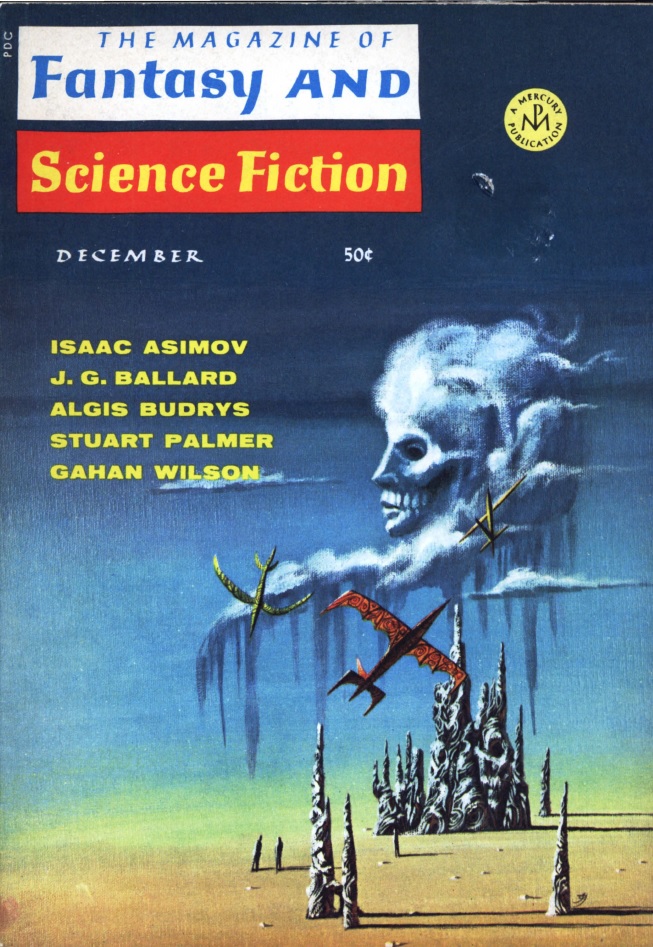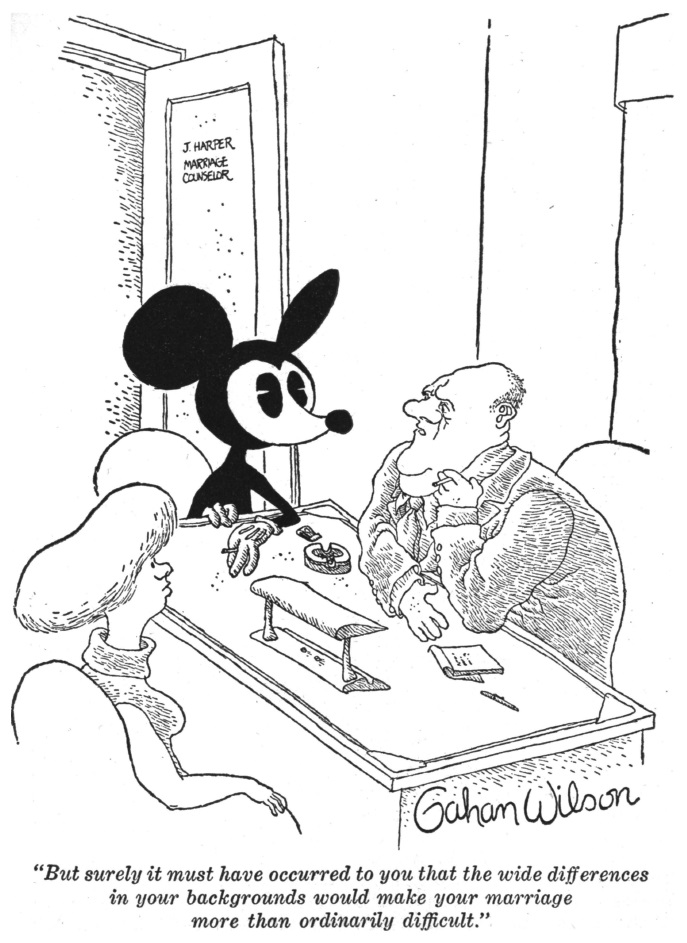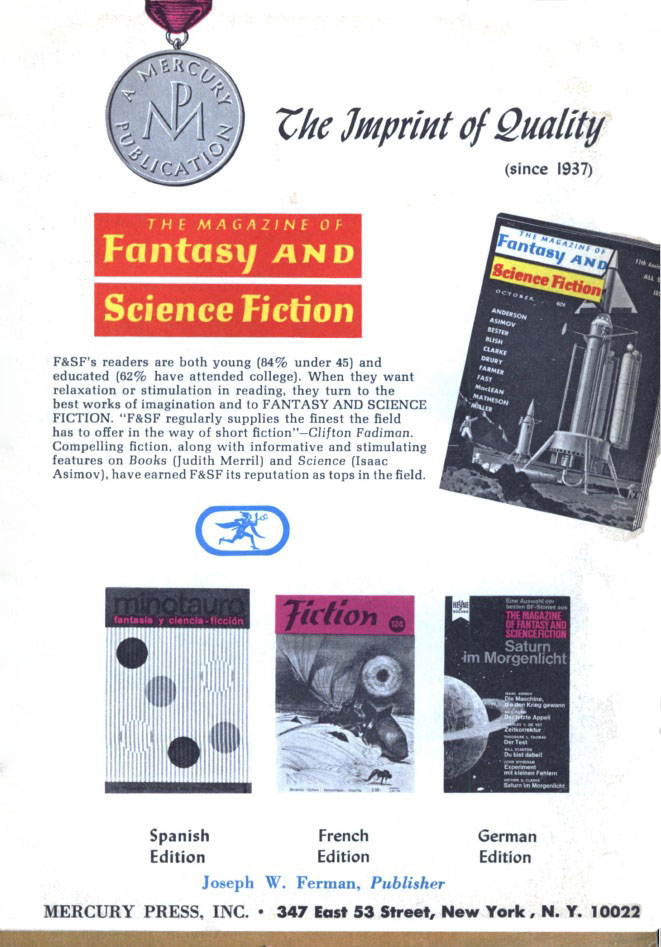
by Victoria Silverwolf
According to a story that may be apocryphal, somebody in the crowd shouted the phrase I'm using for the title of this article during one of Harry Truman's campaign speeches. True or not, we'll see how it relates to a major change in Fantastic magazine. Just to build up the suspense, however, let me digress and talk about another big change.
A Rolling Stone Gathers No Moss
The British rock 'n' roll band known as the Rolling Stones, famous for gritty blues-driven music, went in a different direction recently. The new album Their Satanic Majesty's Request, released just a couple of days ago in both the UK and the USA, is full of the surrealism and dreamy psychedelic tunes to be found in the Beatles' groundbreaking Sgt. Pepper's Lonely Hearts Club Band.

Even the cover looks similar. Note that lack of words. If you don't know who these guys are, you must not be a fan.
I don't know if this album represents the future of the Stones, or if they did it just to gather some green (and I don't mean moss.) At least the groovy song She's a Rainbow is worth a listen while you stare at your lava lamp.
Double Your Pleasure, Double Your Fun
With a new editor at the helm of Fantastic, there are certain to be changes coming, although it may take a while. The mills of the publishing world grind slowly, to be sure, so the latest issue probably doesn't yet reflect the taste of the current boss. If nothing else, however, it's got two new stories instead of the usual one. Thank goodness for small favors.

Cover art by Frank R. Paul.
One change that hasn't yet happened is using new cover art. This issue recycles the back cover of the July 1945 issue of Fantastic Adventures.

Please excuse the faded, wrinkled, beat-up copy of the old magazine I had to use. Twenty-odd years haven't been kind to it. At least you can see the two big suns at the top and not just the two little ones to the side.
When Brahma Wakes, by Fritz Leiber

Illustration by Jeff Jones.
The fellow depicted above is none other than God. The God of the Bible, indeed, but also all the other deities. He hasn't checked on His creation for a while, and it seems to have been messed up by the Adversary, so he gets ready to take a look.
This version of the Almighty seems like a weary old man, wandering around His shabby surroundings, not sure what He should be doing. If you don't mind this kind of literary blasphemy, the main problem you'll have with this story is the fact that it comes to a dead stop when it becomes most interesting.
God never does take a look at things down below. It's almost like the first chapter of a much longer work.
Leiber is incapable of writing a bad sentence, of course, so it's not painful to read. I just wish there were more of it.
Three stars.
A Darkness in My Soul, by Dean R. Koontz

Also by Jones.
A fledgling writer — he's only had a couple of stories published in The Magazine of Fantasy and Science Fiction, both this year — offers this disturbing vision of the future.
After a quarter of a century and countless failures, a project to create superhuman beings has produced only two successes, if you can call them that. One is the main character, a outwardly normal man but with telepathic powers. The other is much more grotesque, a being that looks like a child with the face of a very old man. The latter is immensely intelligent, but his scientific discoveries are buried deep in his subconscious. The telepath dives into his mind in order to dig out vital information.
There's a lot more to the story than that. We've got the protagonist's Freudian sessions with a computer therapist, revealing the meaning of his dreams. The main character has a relationship with a woman who writes scandalous books. The author uses typographic tricks and symbolic fantasy sequences, adding more than a touch of New Wave writing. There's one heck of an ending.
The author displays great skill at creating an eerie mood. Maybe he should try writing out-and-out horror stories instead of creepy science fiction. In any case, this complex nightmare of neurosis shows great ambition for a newcomer.
Four stars.
Reservation Deferred, by John Wyndham
From the May/June 1953 issue of the magazine comes this wry tale of the afterlife.

Cover art by W. T. Mars.
A teenage girl is dying. She's not at all upset about this, because she's absolutely certain she's going to enjoy the bliss of Heaven. For some reason, the ghost of a slightly older woman appears.

Illustration by Charles J. Berger.
The dead woman has taken a peek at the various paradises created by men, and she doesn't much care for them. This changes the dying girl's attitude.
This featherweight jape has a pleasing feminist aspect to it. (Despite the fact that the ghost is wearing only a brassiere and underpants.) Like the Leiber and the Koontz, it may raise the hackles of folks who take their religious faith very seriously.
Three stars.
The Metal Doom (Part 2 of 2), by David H. Keller, M. D.
As I mentioned last time, this serialized novel first appeared in three issues of Amazing Stories back in 1932. Dig through the archives if you want to see the covers of those old magazines.

Illustration by Leo Morey.
Last time we saw how civilization fell apart when all metals dissolved into dust. Some folks set up strongholds in the country, where they could defend themselves against packs of desperate criminals.
This half of the novel wanders around quite a bit. One sequence involves a group of female physicians and other professionals living on their own. As soon as one of the male characters meets them, you know we're going to have a love story. You may not predict the fact that it involves a tiger.
In the most bizarre plot development, a horde of Tartars shows up, and we get a big battle scene. There's an explanation, of sorts, for how these landlocked nomadic warriors wound up in New England. The way the good guys defeat the bad guys is implausible, to say the least.
Eventually, our heroes figure out how to turn the dust back into metal. You'd think somebody would have discovered the secret long before, but what do I know. Interestingly, the main motivation for producing small amounts of metal is to make surgical instruments so childbirth isn't so dangerous for mother and baby.
The author seems to believe that city life is inherently corrosive to the human spirit, and suggests that society was ready to fall apart even if metal things hadn't crumbled away. I'm not convinced.
Overall, I didn't find the development of the apocalyptic premise as interesting as its introduction.
Two stars.
Undersea Guardians, by Ray Bradbury
This early work from a writer who is now something of a household name comes from the December 1944 issue of Amazing Stories.

Cover art by James B. Settles.
A handful of the people killed when a German submarine destroyed their passenger ship turn into water-breathing ghosts or zombies, for lack of a better word. They spend their non-lives preventing Nazi subs from attacking Allied ships.

Illustration by Arnold Kohn.
This is something more than just wartime propaganda, although there's certainly some of that. The undead characters have their own motives and personalities. The most interesting are two women, one of whom is out for revenge, gleefully killing Germans, the other trying to protect the man she loves, who is sailing on a convoy.
We don't get much of the Bradbury touch, love it or hate it, with the exception of a few metaphors here and there. If I hadn't see the author's name, I never would have suspected it was his work.
Three stars.
They Fly So High, by Ross Rocklynne
This outer space yarn comes from the pages of the June 1952 issue of Amazing Stories.

Cover art by Walter Popp.
A spaceman holds a Mad Scientist prisoner aboard his vessel. The taunting genius has already rigged the ship to blow up, so the two of them go flying off towards Jupiter in their spacesuits.

Illustration by David Stone.
What follows is a strange odyssey on the surface (more or less) of the giant planet, and a change in the relationship between the two characters.
This is an odd story. It combines melodramatic space opera, vistas of a bizarre environment, and philosophical dialogues. I suppose the author is trying to say something about human thinking while telling a rattling good yarn, but much of its meaning escapes me.
Two stars.
The Sex Opposite, by Theodore Sturgeon
This tale of love, death, and biology comes from the Fall 1952 issue of the magazine.

Cover art by Leo Summers.
The plot begins in gruesome fashion, as a couple are murdered by street thugs. A coroner (male) reveals the weird thing about the bodies to a reporter (female). (I mention their sexes because it's relevant to the story.)
The two victims are Siamese twins, bound together at the chest. (You may have already guessed that this isn't quite true.) When an eerie, inhuman scream draws the protagonists out of the building, somebody destroys the bodies in a blazing fire.

Also by David Stone.
The coroner meets a woman with whom he shares an intimate but nonsexual evening. The reporter has the same kind of encounter with a man, but we only get to hear about it second-hand. What does this have to do with the bodies? And why should the reader run to the dictionary and look up the various definitions of the word syzygy?
This is an intriguing work that always keeps the reader's interest. It's a mystery, a romance, and good science fiction to boot. Maybe you should stir in a touch of horror as well. In any case, it's a solid work from one of the masters.
Four stars.
Never Go Back, by Charles V. De Vet
The magazine finishes with this time travel story, reprinted from the August/September 1953 issue of Amazing Stories.

Cover art by Gaylord Welker.
A guy goes back in time to prevent a childhood friend from drowning. The weird thing is that there's no sign of his own younger self, and even his mother denies such a child exists. When he returns to his own time, the scientist he worked with claims he never saw him before. What the heck is going on?

Illustration by Ernie Barth.
The author makes up some pretty weird rules about time travel. I have to admit they're unique, even if they don't make a lot of sense to me. The ending is gruesome enough for any horror fan.
Two stars.
That's an overstatement, although I am hopeful that the new editor will bring some freshness to a magazine that has been dragging its feet for a while. This issue doesn't show any evidence of a major shift in policy yet. Time will tell. Meanwhile, just having double the usual amount of new fiction is enough to make me want to be kind to small animals.

I can't tell you anything about this drawing, which follows the Sturgeon story, except that it doesn't appear with the original publication of that work. It's probably a reprint from somewhere, but I have no evidence for that one way or another.

![[December 10, 1967] Give 'Em Hell, Harry! (January 1968 <i>Fantastic</i>)](https://galacticjourney.org/wp-content/uploads/2022/11/COVER-ART-3-672x372.jpg)

![[December 8, 1967] You're a Big Girl Now (<i>Star Trek</i>: "Friday's Child")](https://galacticjourney.org/wp-content/uploads/2022/12/671208title-672x372.jpg)

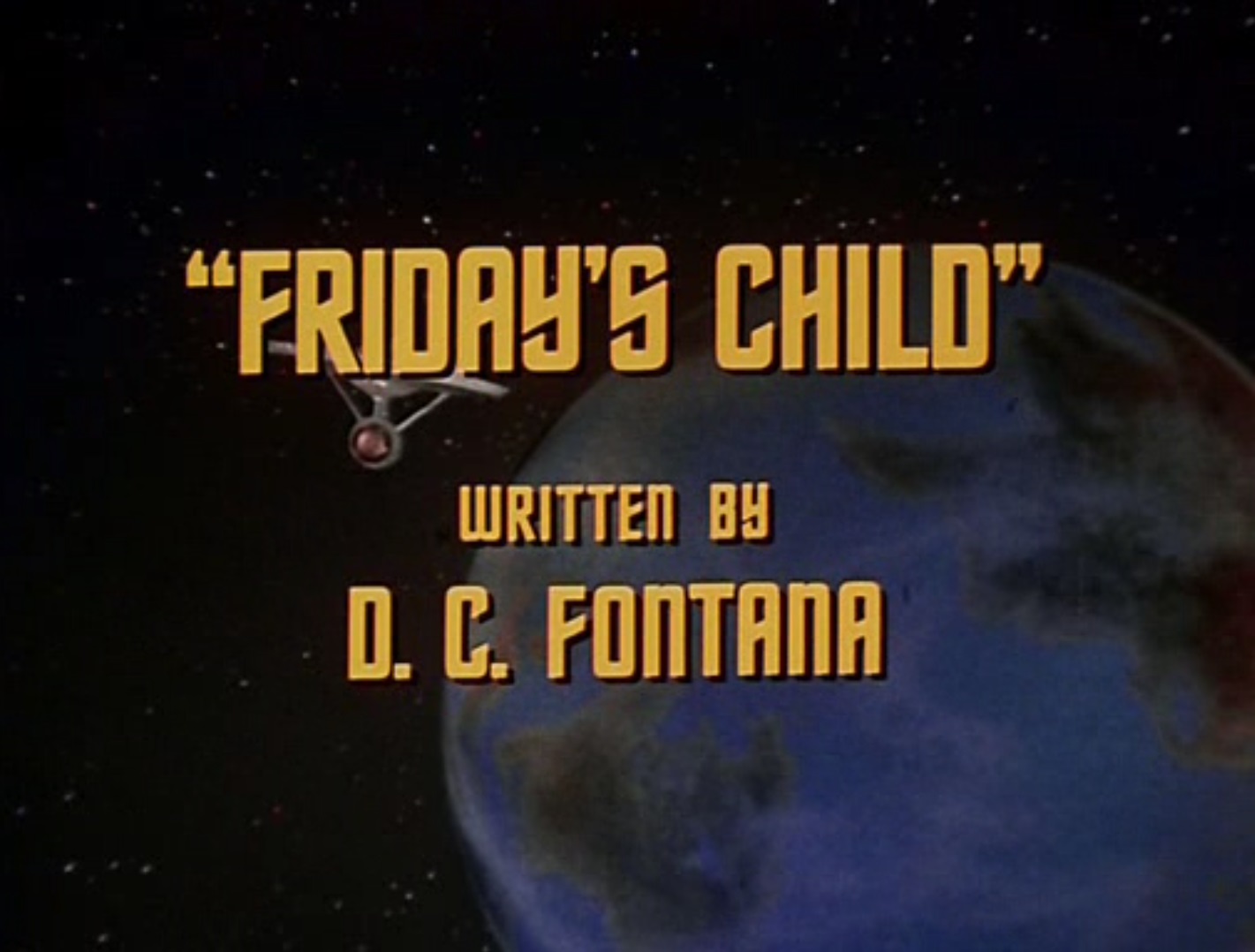



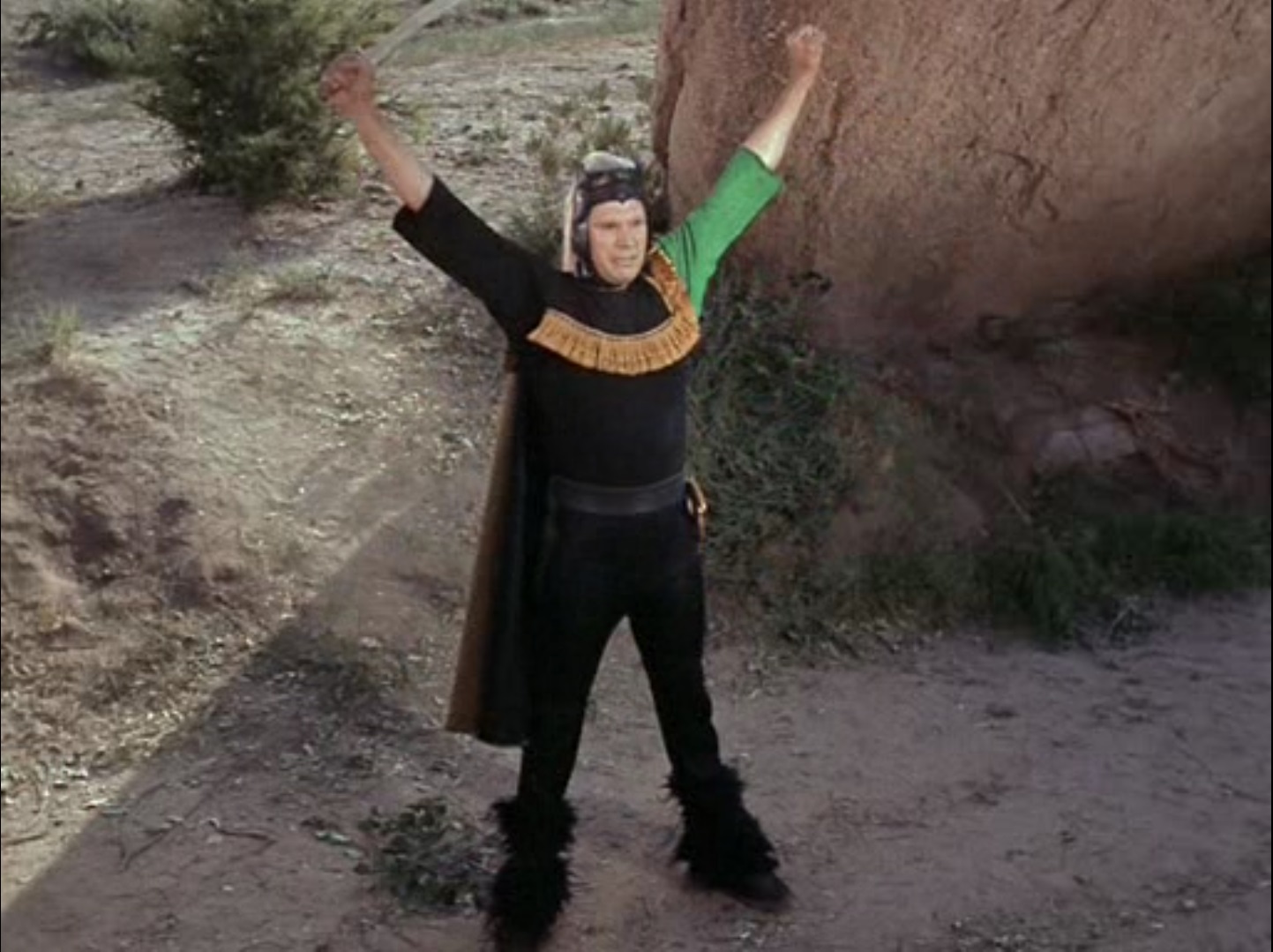

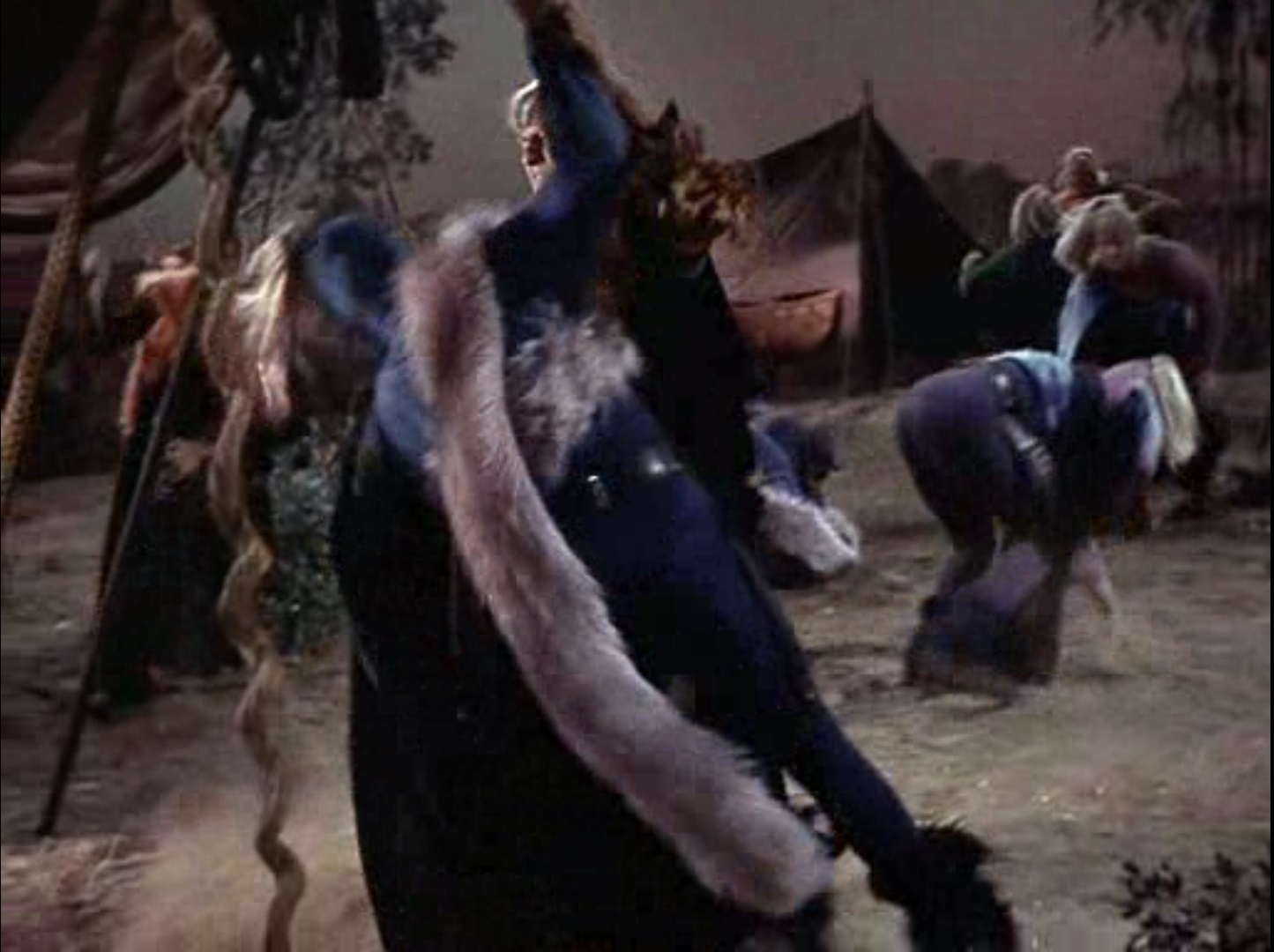

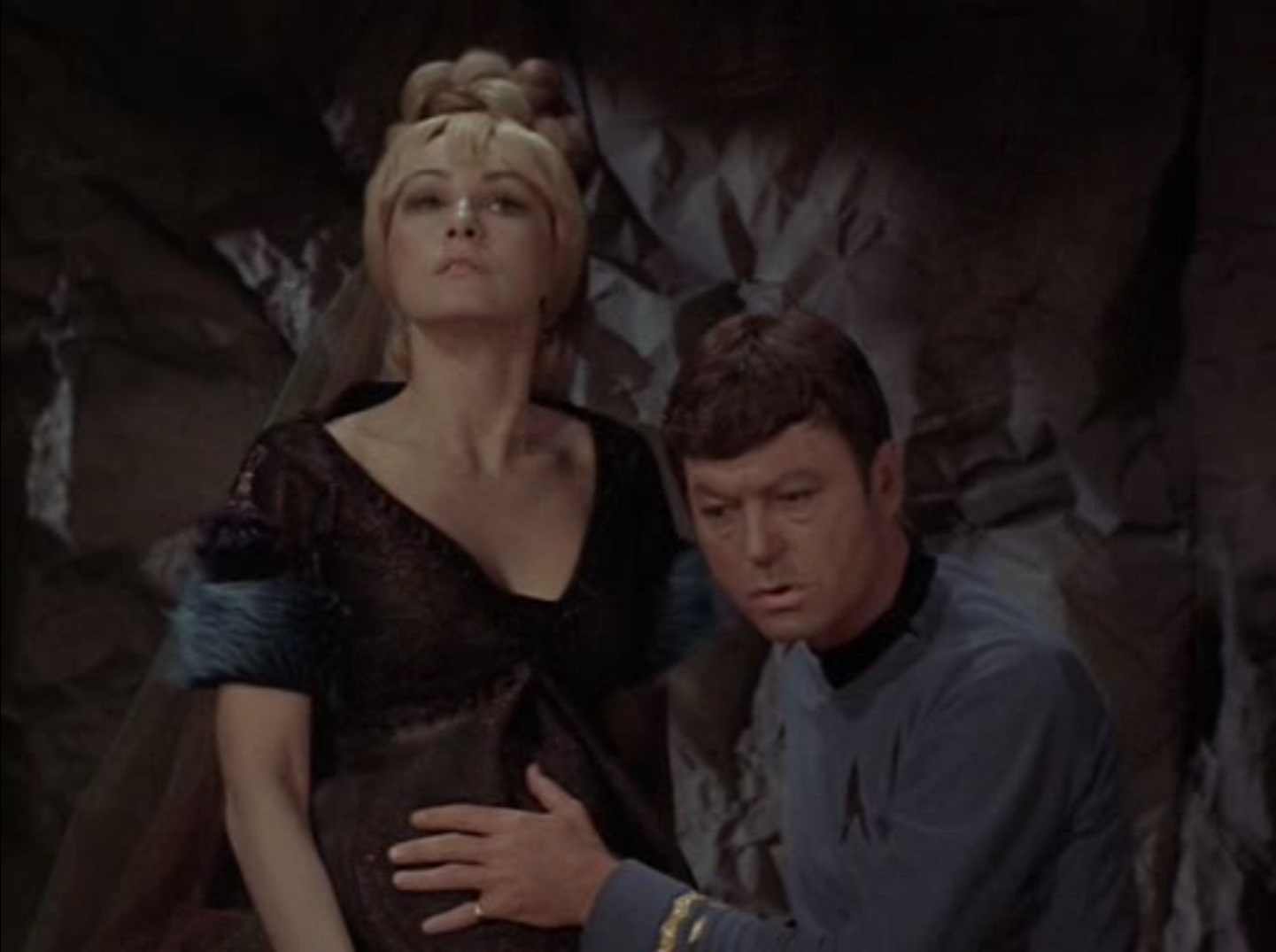
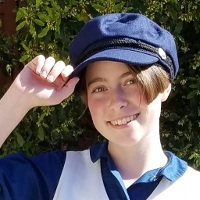


![[December 6, 1967] Brotherly Love (<i>Dangerous Visions</i>, Part Two)](https://galacticjourney.org/wp-content/uploads/2022/11/DangerousVisions1stEdxx971656156_465_692_int-2.jpg)

![[December 4, 1967] Devaluation (<i>New Writings in SF-11</i> & <i>Beyond Infinity</i> December 1967)](https://galacticjourney.org/wp-content/uploads/2022/10/Cover-Image-672x372.jpg)


















![[December 2, 1967] Women and Men (January 1968 <i>IF</i>)](https://galacticjourney.org/wp-content/uploads/2022/11/IF-1968-01-Cover-672x372.jpg)

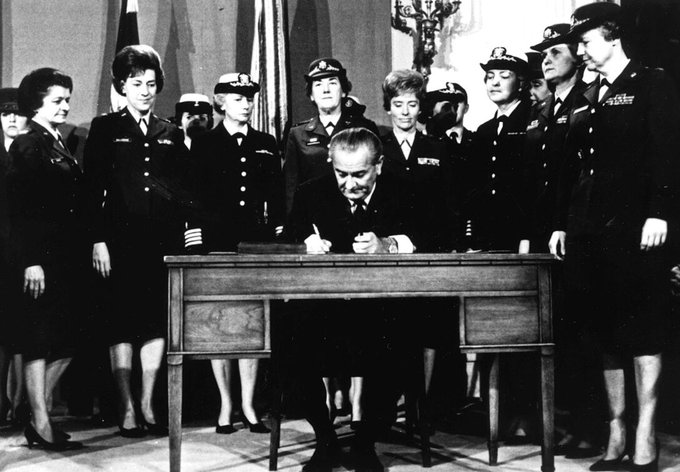 President Johnson signing the law allowing women to rise in the ranks.
President Johnson signing the law allowing women to rise in the ranks.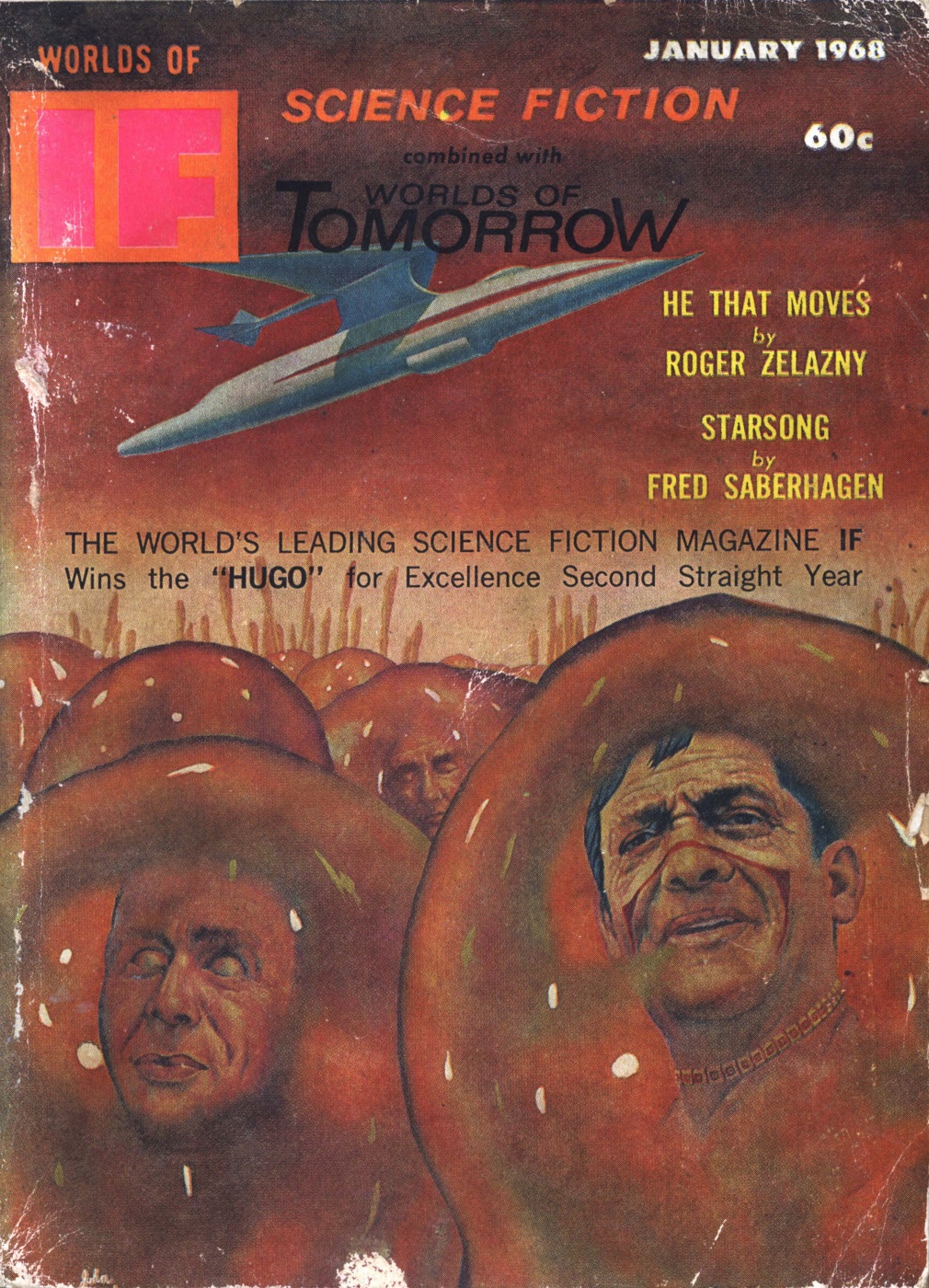 What are these people doing in these blobs? Art by Pederson
What are these people doing in these blobs? Art by Pederson![[November 30, 1967] One door closes… (December 1967 <i>Analog</i> and Australia joins the Space Race!)](https://galacticjourney.org/wp-content/uploads/2022/11/671130cover-672x372.jpg)
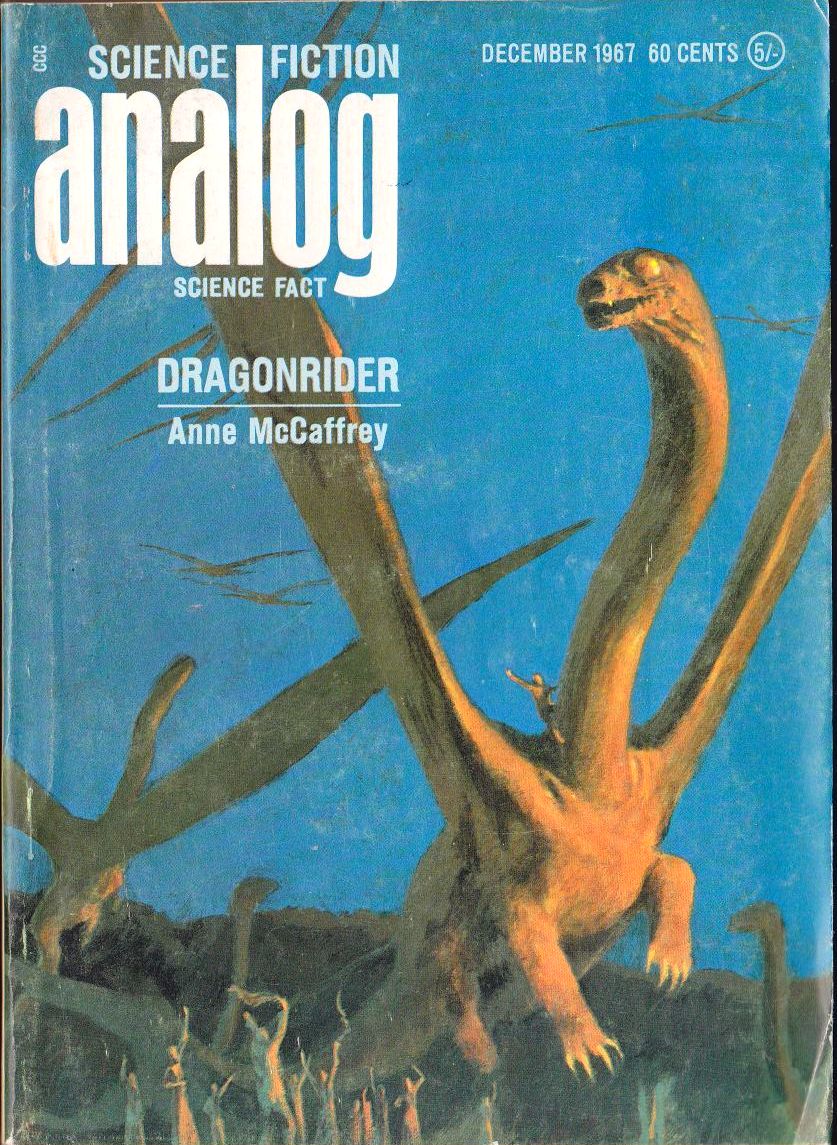
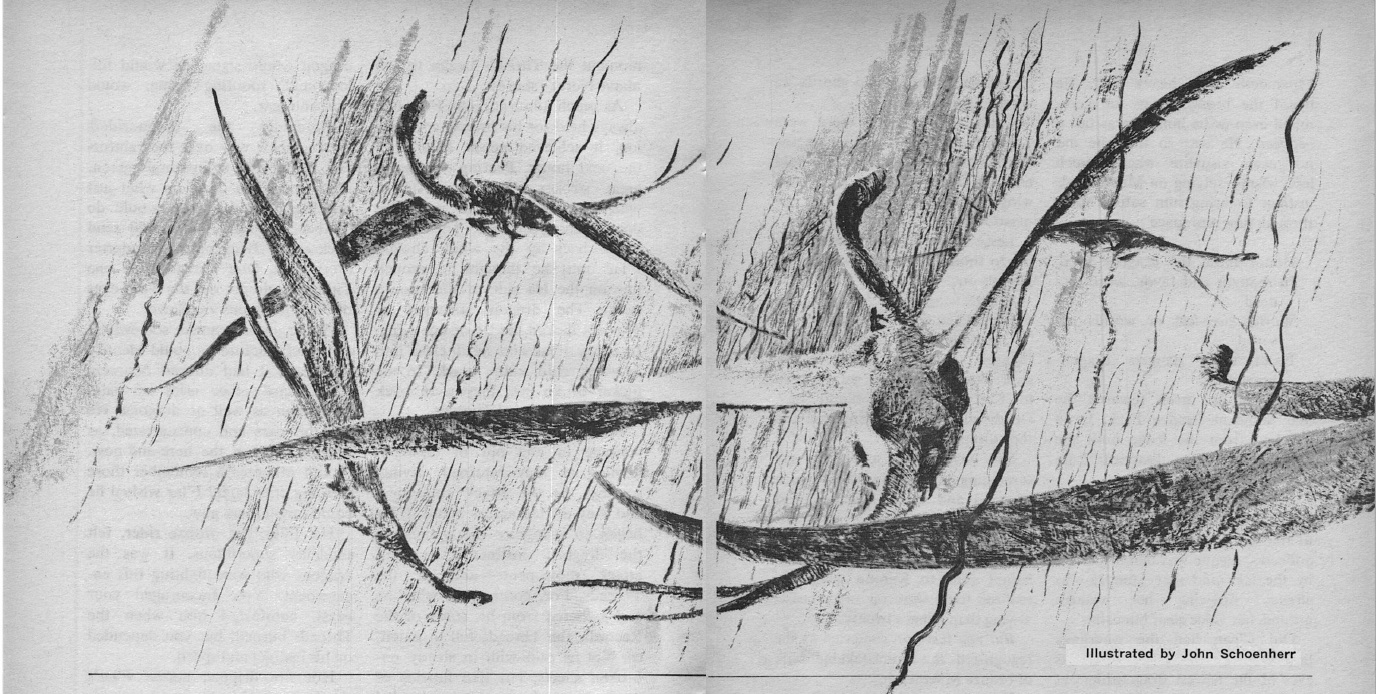

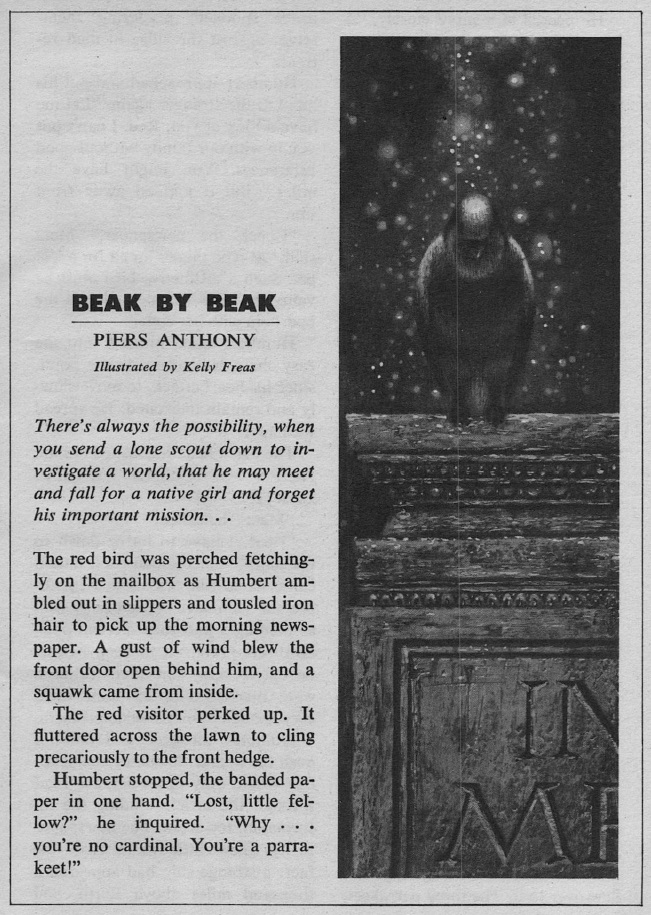
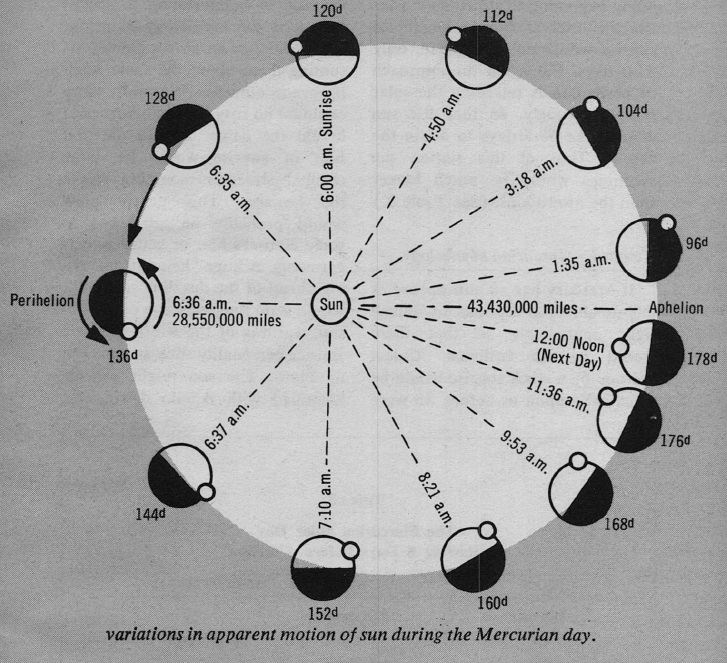

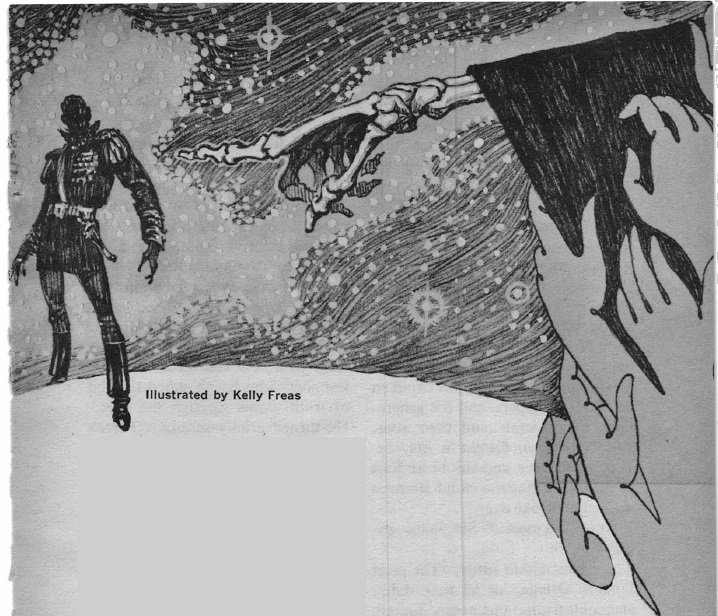


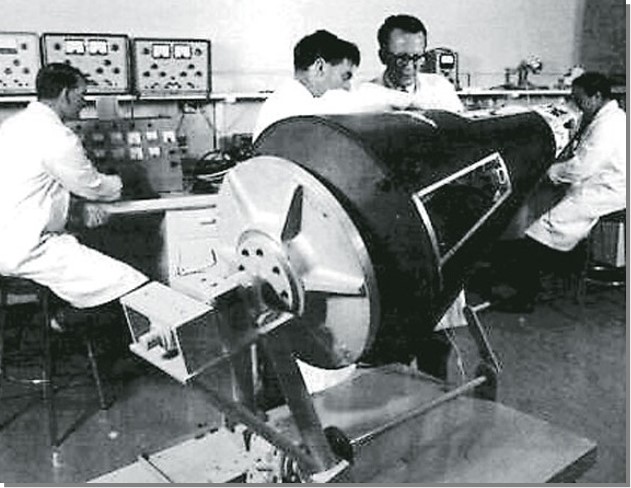
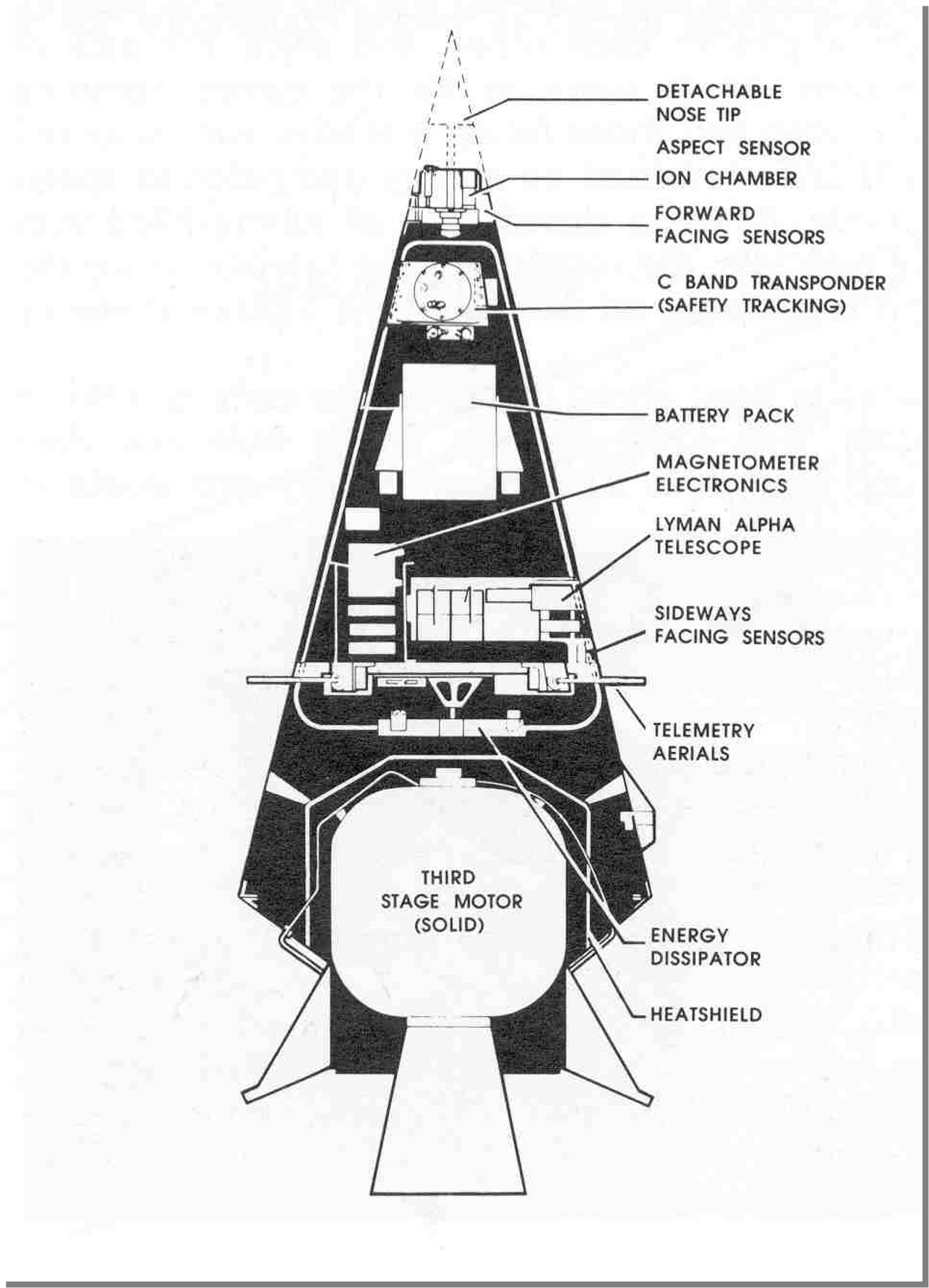

![[November 28, 1967] Aliens On Ice (<i>Doctor Who</i>: The Ice Warriors [Part 1])](https://galacticjourney.org/wp-content/uploads/2022/11/671128legohands-672x372.jpg)


![[November 26, 1967] The Shock of the New – Part 3 <i>New Worlds</i>, December 1967 – January 1968](https://galacticjourney.org/wp-content/uploads/2022/11/new-worlds-dec-67-672x372.jpg)

 Carnaby Street, London: where's the snow?
Carnaby Street, London: where's the snow?
 Cover by Eduardo Paolozzi, designed by Charles Platt and Christopher Finch
Cover by Eduardo Paolozzi, designed by Charles Platt and Christopher Finch Example of one of the pages of Eduardo Paolozzi and Richard Hamilton art.
Example of one of the pages of Eduardo Paolozzi and Richard Hamilton art.




 There's quite a few missing here!
There's quite a few missing here!
![[November 24, 1967] Guess who's coming to dinner? (<i>Star Trek</i>: "Journey to Babel")](https://galacticjourney.org/wp-content/uploads/2022/11/671124title-672x372.jpg)
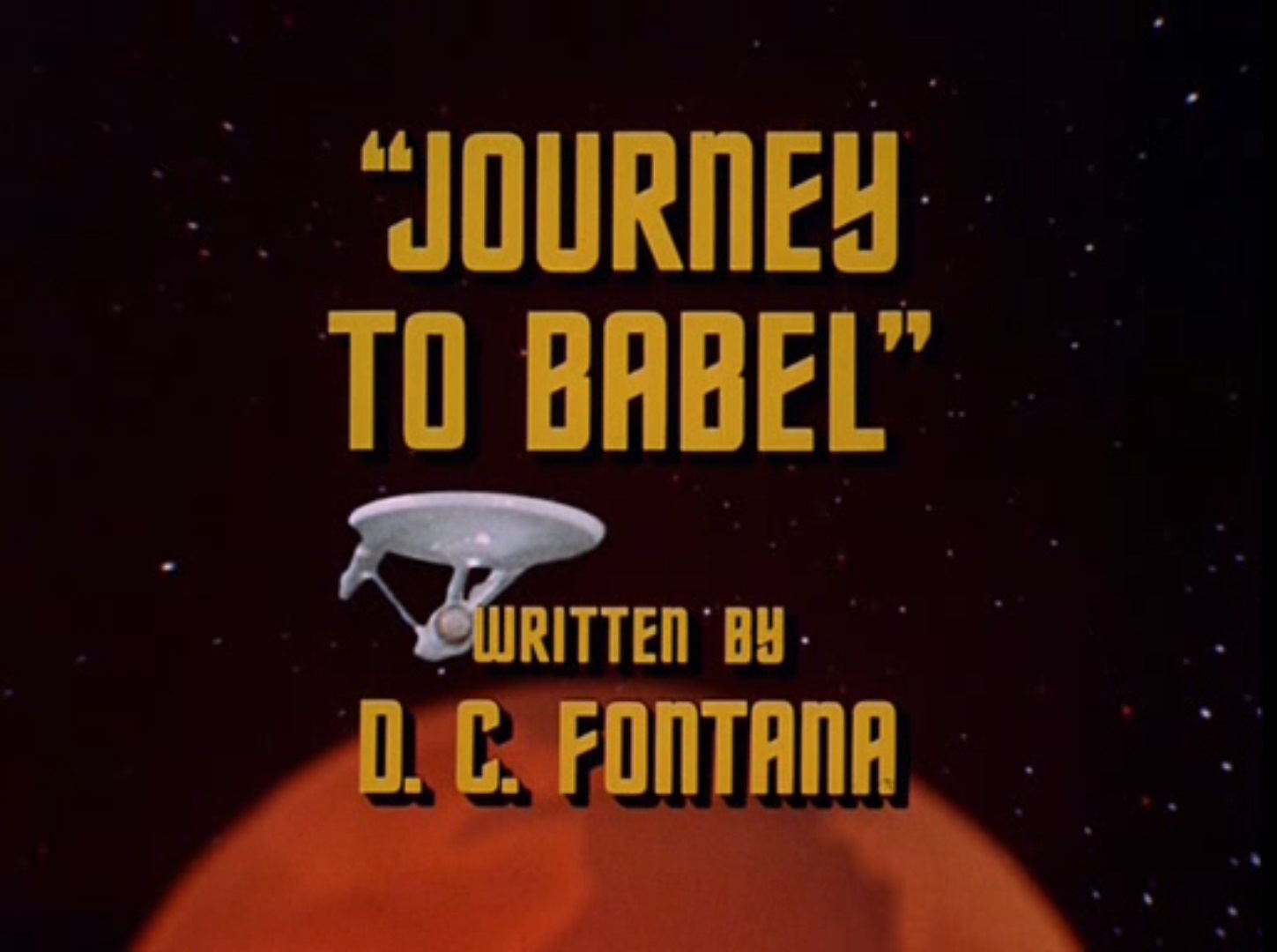
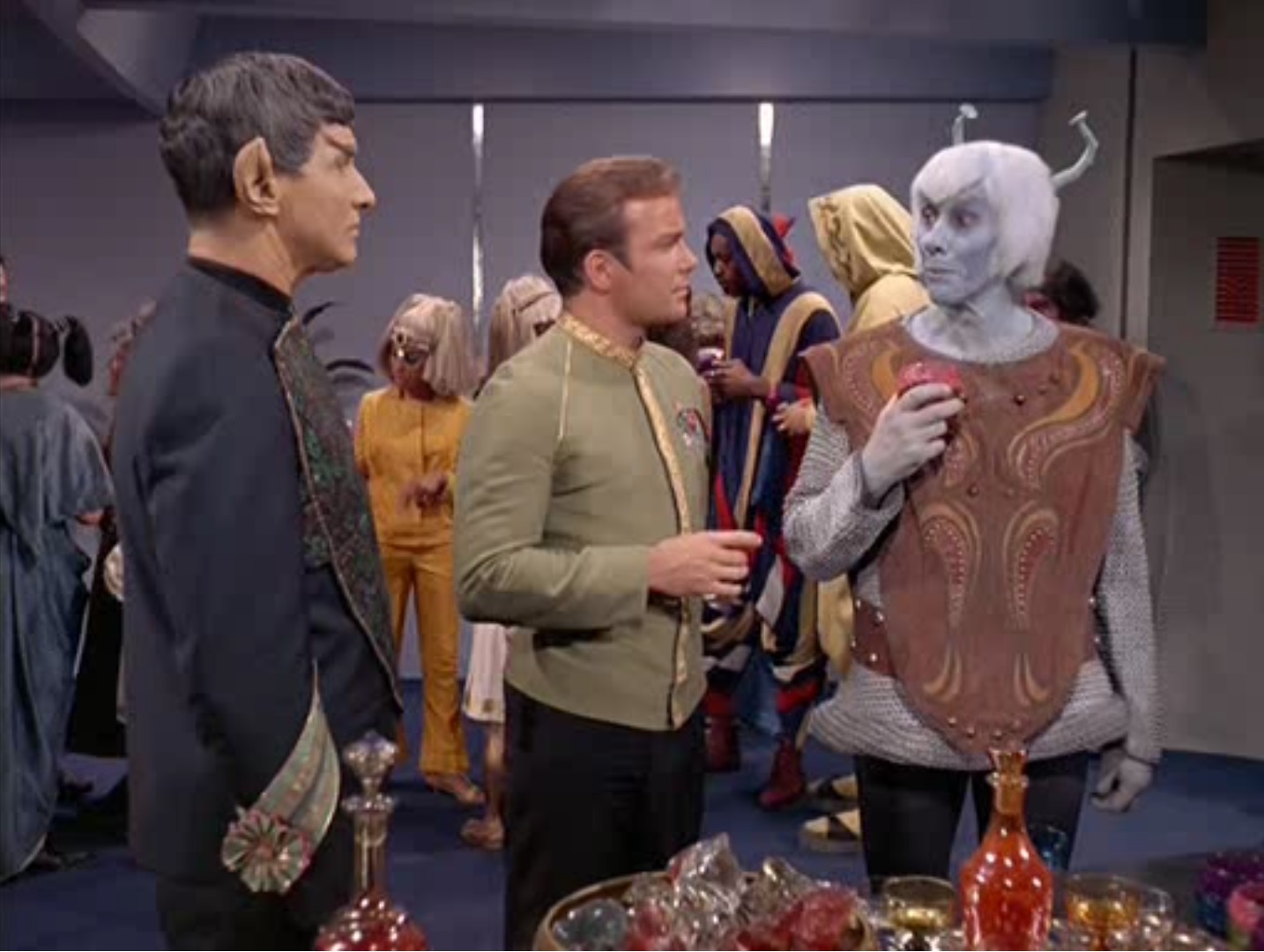
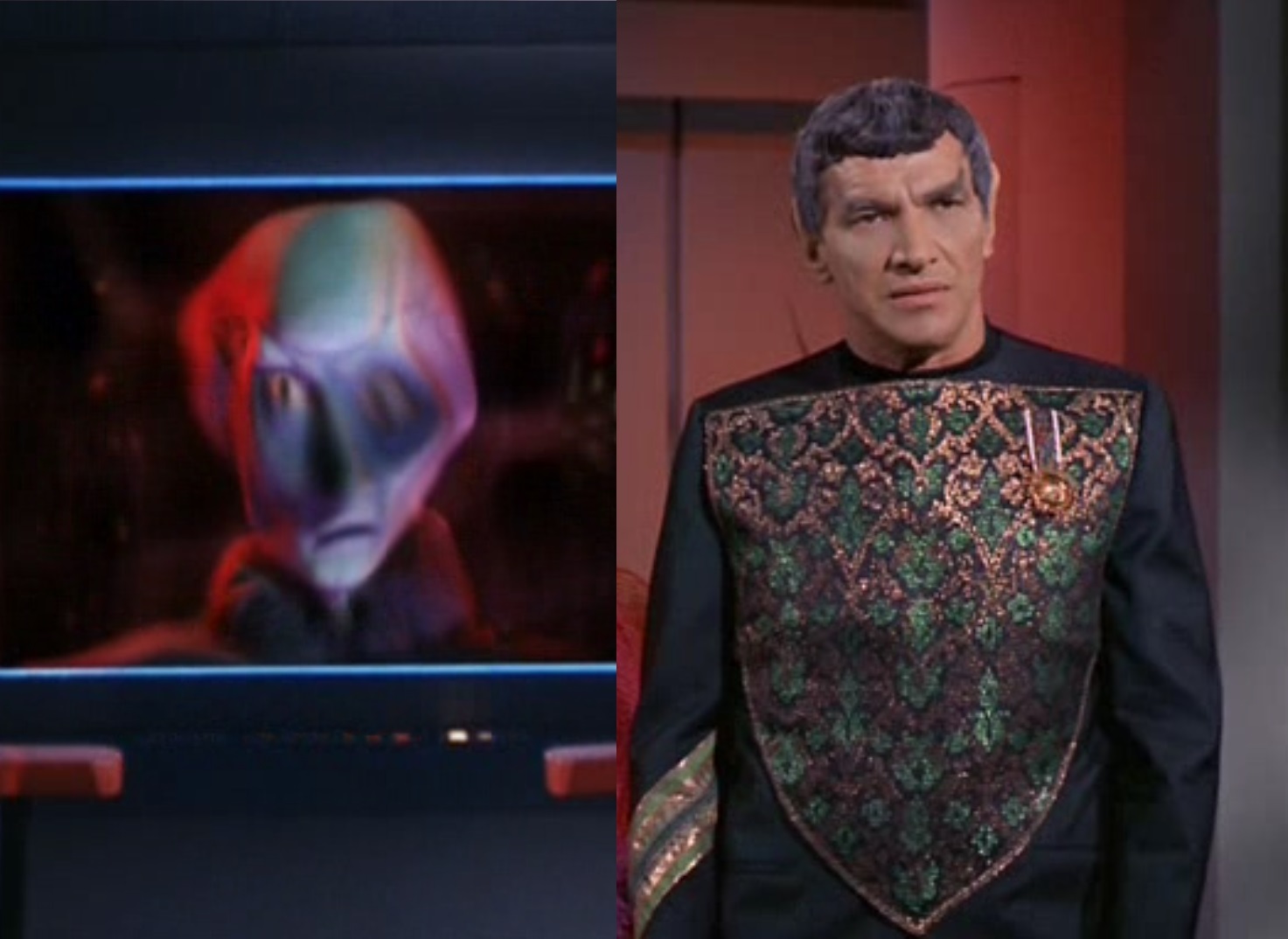
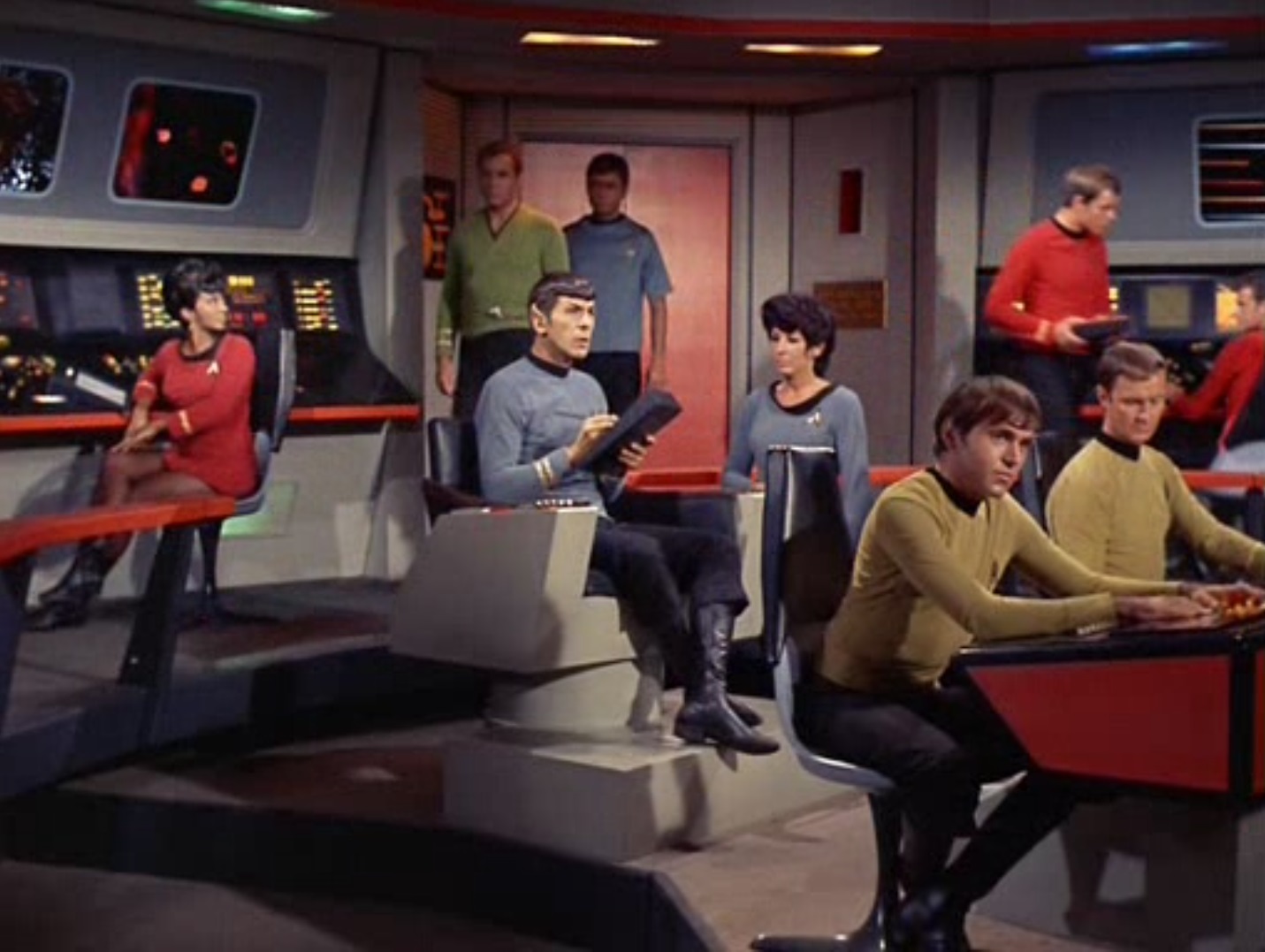
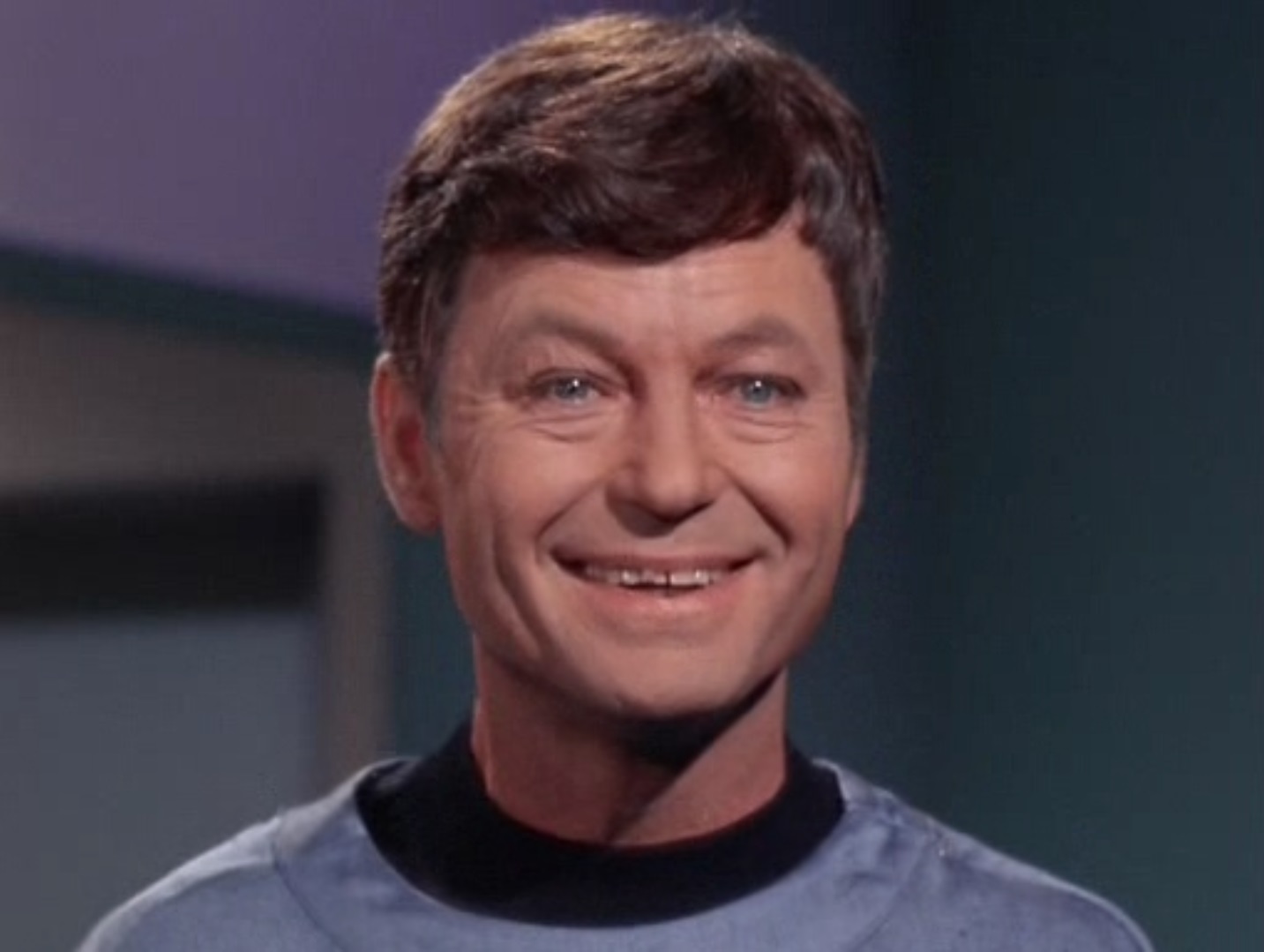

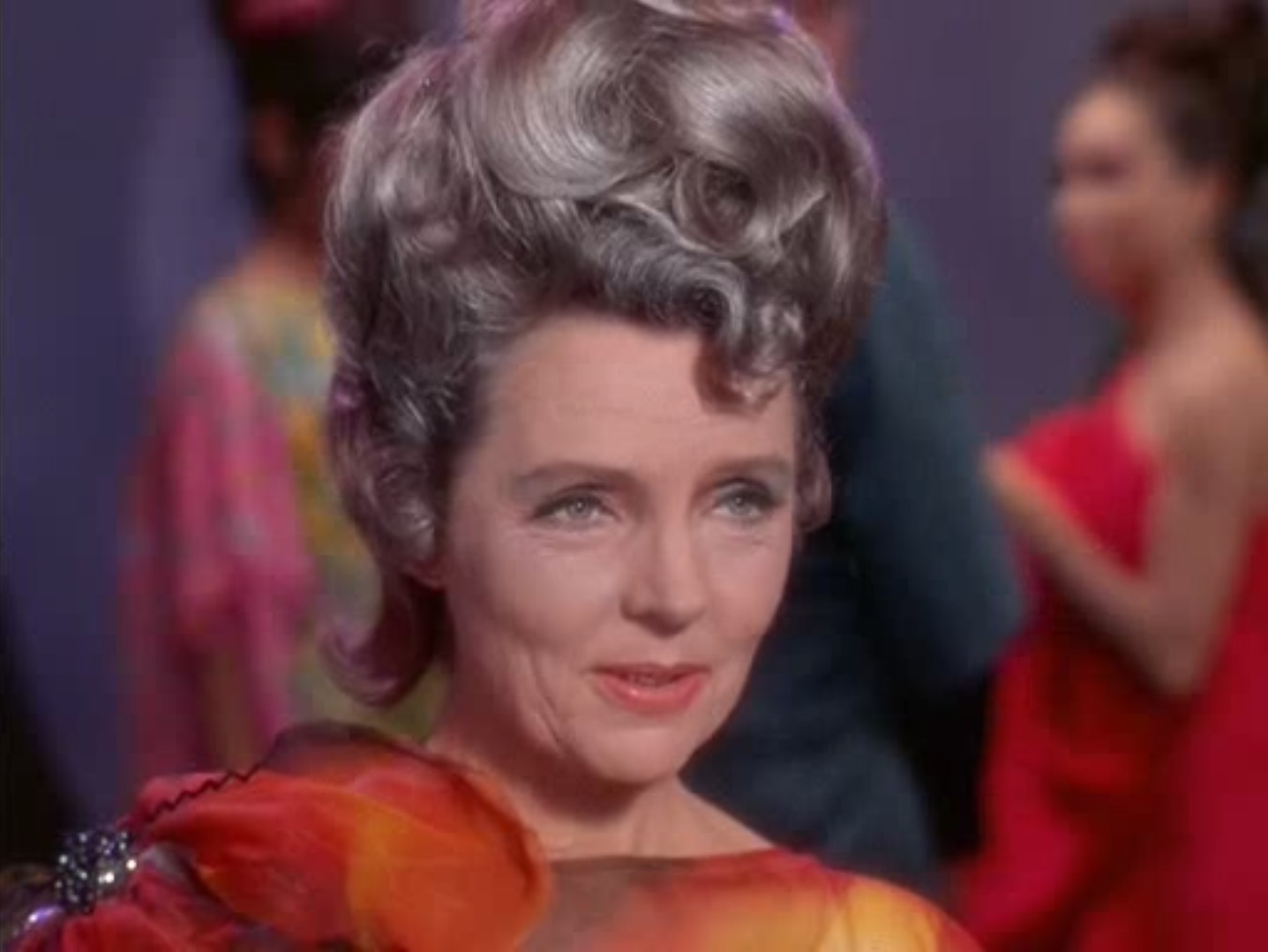


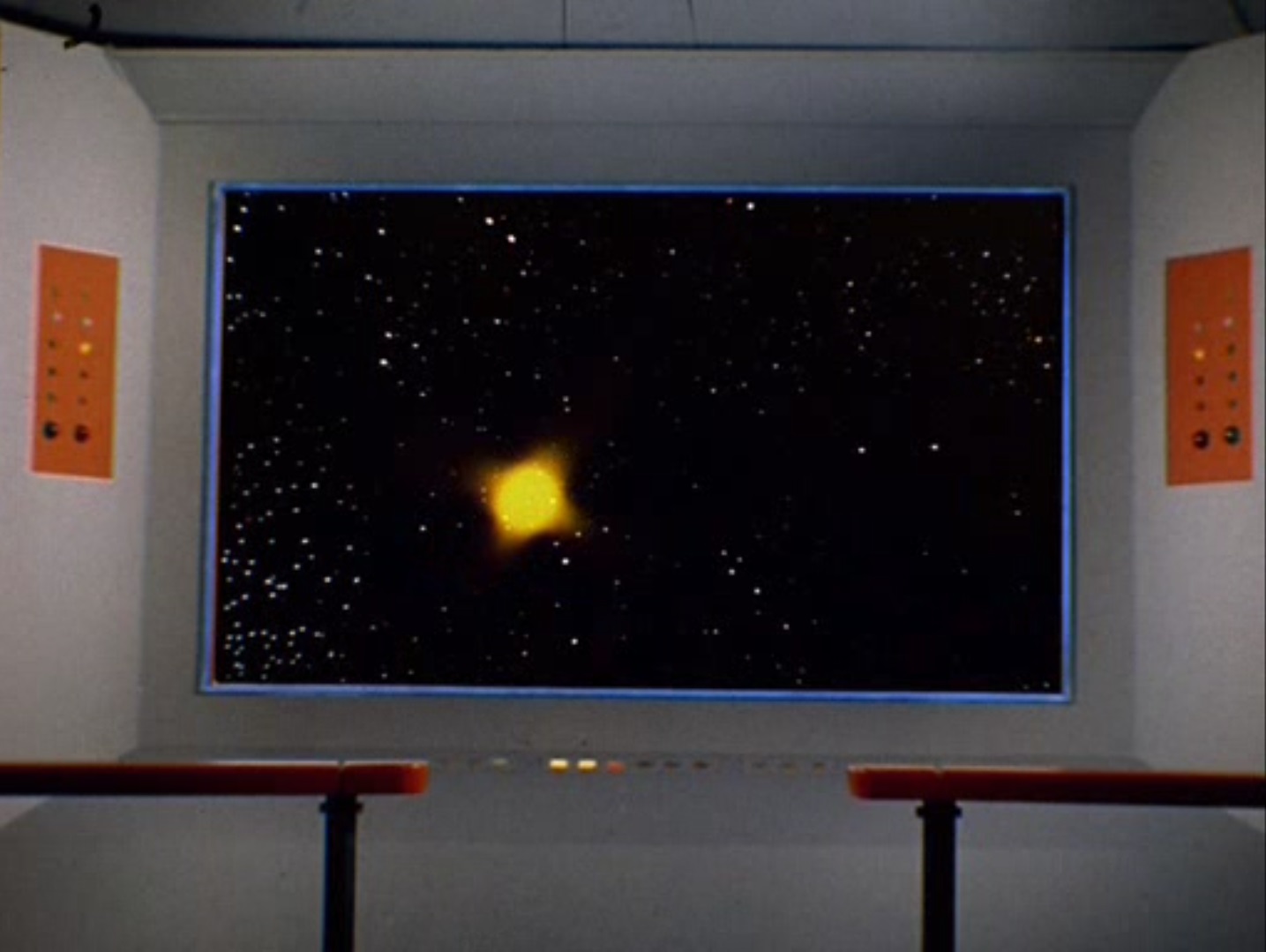
![[November 22, 1967] Being #3… (December 1967 <i>Fantasy and Science Fiction</i>)](https://galacticjourney.org/wp-content/uploads/2022/11/671122cover-653x372.jpg)

